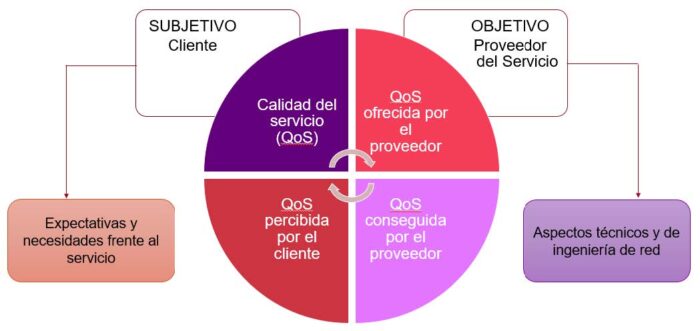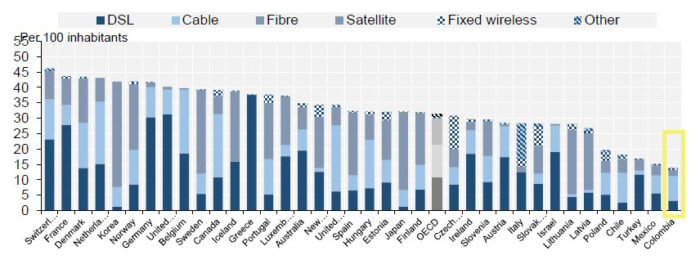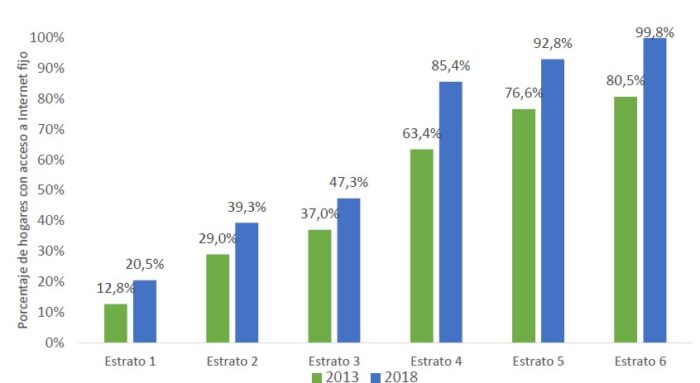Colombia: Access to Quality Telco Services

Comprehensive Strategy to Improve Fixed and Mobile Services Conditions by MinTIC
The evident shift in usage habits, with an increasing demand for more complex services, has brought significant challenges for companies in providing telecommunications services.
In recent months, we have seen an exponential growth in Internet usage in households. According to the Ministry of Information Technology and Communications (MinTIC), Internet connections, both mobile and fixed, have increased across Latin America. Additionally, there is a global increase in 4G connections, leading to a decline in 2G and 3G connections and generating high expectations for 5G technology. Considering this rapid evolution in the telecommunications sector, achieving a satisfactory user experience on the Internet is becoming a global priority, and service quality is a factor gaining more importance than ever.
This is the case in Colombia, which has seen this trend as an opportunity to promote access to quality telecommunications services. MinTIC has developed and published a comprehensive strategy to improve the conditions of both fixed and mobile services, particularly to enhance the quality of user experience and consumption of telecommunications services in the country.
This plan is based on balancing the needs, expectations, and perception of the service users, while considering the perspective of the service providers. This requires taking into account technical and network engineering aspects to improve the offering of quality services and achieve desired thresholds.

According to MinTIC, Colombia is one of the leading countries in quality of service measurement in terms of quality requirements that operators must meet. However, Colombia still faces significant challenges regarding access to fixed and mobile Internet, and it lags behind in broadband penetration compared to other members of the Organization for Economic Cooperation and Development (OECD).

Access to fixed Internet is highly conditioned by socioeconomic areas, as deployment is carried out in places with higher demand, making the provision of such service more profitable.
Additionally, in less privileged areas and communities, the telecommunications infrastructure is usually less robust. While only 20.5% of households have access to the Internet in the lowest stratum, over 85% of households in higher strata have access, according to the study.
In Colombia, residential properties are classified into six socioeconomic strata. Strata 1, 2, and 3 are considered lower strata housing those with fewer resources, who are beneficiaries of subsidies in public utilities services. Strata 5 and 6 correspond to higher strata housing users with higher economic resources who must pay surcharges (contribution) on the value of public utility services. Stratum 4 does not receive subsidies nor surcharges and pays the exact value defined by the company for providing the service.

In mobile Internet services, there have been advancements in the country, with coverage extending to 98.1% of municipalities with 2G coverage, 98.3% with 3G coverage, 97.1% with HSPA+ coverage, and 95.4% with LTE coverage. However, there is still no 100% coverage due to factors like geographic diversity. It is important to note that these coverage conditions refer to the presence of the network in municipalities and not a national territory coverage footprint, among other considerations.
Colombia aims to promote "massification of mobile and fixed services in the country with adequate service provision conditions." According to the report, there are barriers to infrastructure deployment from the supply side, as private investment and state efficiency are insufficient. On the demand side, low payment capacity and lack of awareness of the benefits of accessing these services also influence the situation.
A fundamental step of the strategy is to incentivize infrastructure deployment and achieve the goal set for 2022 to reach 32 million Internet connections with more than 10 Mbps download speed.
The study proposes a series of initiatives to increase coverage in Colombia, boost investments in infrastructure, and ensure compliance with required quality through the Commission for Communications Regulation (CRC), the Colombian regulatory body for telecommunications. It also involves spectrum allocation, removing barriers to infrastructure deployment, and expanding connectivity benefits.
"As part of our 'Executing and Connecting Plan,' our goal is not only to guarantee coverage but also quality. It is important that users have access to communication services in good conditions, allowing them to make appropriate use of technology. Therefore, we are publishing this strategy today, which will help us develop improvement initiatives for all those actors and factors that influence the conditions of fixed and mobile service provision in Colombia," said the Minister of ICT, Karen Abudinen.
At MedUX, we work to provide tools that help telecommunications operators ensure continuous improvement in the Quality of Experience and Quality of Service of their fixed and mobile networks. We rely on information and data extracted from the real perspective of end-users, providing operators with a holistic view of service conditions to facilitate quick issue detection.
MedUX offers innovative solutions to the telecommunications industry to address these new challenges, enabling our clients to assess the quality of services offered and promote user empowerment while complying with regulatory requirements.
Subscribe to our newsletter and receive our blog articles and much more!
